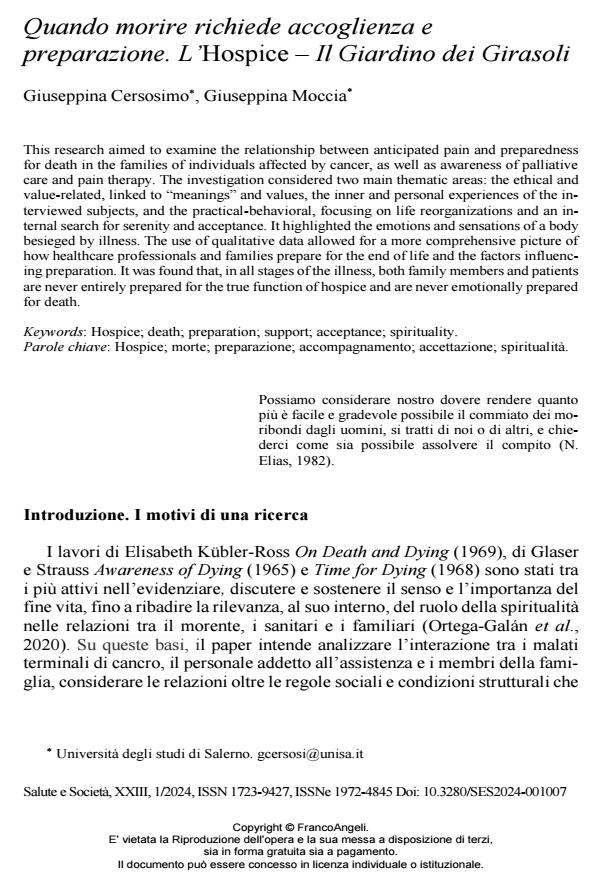Quando morire richiede accoglienza e preparazione. L’Hospice - Il Giardino dei Girasoli
Journal title SALUTE E SOCIETÀ
Author/s Giuseppina Cersosimo, Giuseppina Moccia
Publishing Year 2024 Issue 2024/1
Language Italian Pages 16 P. 101-116 File size 427 KB
DOI 10.3280/SES2024-001007
DOI is like a bar code for intellectual property: to have more infomation
click here
Below, you can see the article first page
If you want to buy this article in PDF format, you can do it, following the instructions to buy download credits

FrancoAngeli is member of Publishers International Linking Association, Inc (PILA), a not-for-profit association which run the CrossRef service enabling links to and from online scholarly content.
This research aimed to examine the relationship between anticipated pain and preparedness for death in the families of individuals affected by cancer, as well as awareness of palliative care and pain therapy. The investigation considered two main thematic areas: the ethical and value-related, linked to “meanings” and values, the inner and personal experiences of the interviewed subjects, and the practical-behavioral, focusing on life reorganizations and an internal search for serenity and acceptance. It highlighted the emotions and sensations of a body besieged by illness. The use of qualitative data allowed for a more comprehensive picture of how healthcare professionals and families prepare for the end of life and the factors influencing preparation. It was found that, in all stages of the illness, both family members and patients are never entirely prepared for the true function of hospice and are never emotionally prepared for death.
Keywords: Hospice; death; preparation; support; acceptance; spirituality.
Giuseppina Cersosimo, Giuseppina Moccia, Quando morire richiede accoglienza e preparazione. L’Hospice - Il Giardino dei Girasoli in "SALUTE E SOCIETÀ" 1/2024, pp 101-116, DOI: 10.3280/SES2024-001007